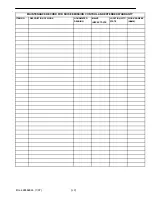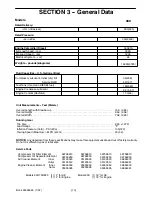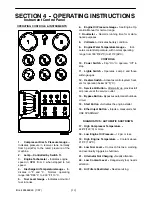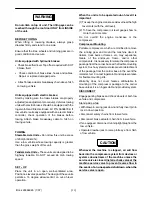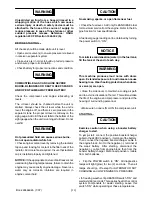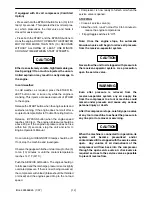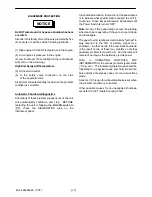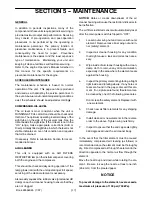
33
( )
Book 22464945 (1/07)
EXTERIOR FINISH CARE
This unit was painted and heat cured at the factory
with a high quality, thermoset polyester powder
coating. The following care will ensure the longest
possible life from this finish.
1.
If necessary to remove dust, pollen, etc. from
housing, wash with water and soap or dish washing liq-
uid detergent. Do not scrub with a rough cloth, pad,
etc.
2.
If grease removal is needed, a fast evaporating
alcohol or chlorinated solvent can be used. Note: This
may cause some dulling of the paint finish.
3.
If the paint has faded or chalked, the use of a
commercial grade, non--abrasive car wax may partial-
ly restore the color and gloss.
Field Repair of Texture Paint
1.
The sheet metal should be washed and
clean of foreign material and then
thoroughly dried.
2.
Clean and remove all grease and wax from
the area to be painted using Duponts 3900S
Cleaner prior to sanding.
3.
Use 320 grit sanding paper to repair any
scratches or defects necessary.
4.
Scuff sand the entire area to be painted with
a red scotch brite pad.
5.
Wipe the area clean using Duponts 3900S.
6.
Blow and tack the area to be painted.
7.
Apply a smooth coat of Duponts 1854S
Tuffcoat Primer to all bare metal areas and
allow to dry.
8.
Apply 2 medium -- wet coats of Duponts
222S Adhesion Promoter over the entire
area to be painted, with a 5 minute flash in
between coats.
9.
To apply the texture coat, use Duponts
1854S
Tuffcoat
Primer.
The
proper
technique to do this is to spray the Tuffcoat
Primer using a pressure pot and use about
2--5 pounds of air pressure. This will allow
the primer to splatter causing the textured
look. Note: You must be careful not to put
too much primer on at one time, this will
effect the amount of texture that you are
trying to achieve. Allow the texture coat to
flash for 20 minutes or until dry to touch.
10.
Apply any of Duponts Topcoat Finishes
such as Imron
t
or Centari
t
according to
the label instructions.
Note: To re--topcoat the textured surfaces when
sheet metal repairs are not necessary,
follow steps 1, 2, 4, 5, 6, 8 and 10.
COOLING FAN DRIVE
The heat exchanger or cooling fan is driven by a belt
arrangement directly from the engine. Inspect the en-
gine fan belt weekly or at 50 hour intervals. Refer to en-
gine section for proper belt adjustment procedures.

